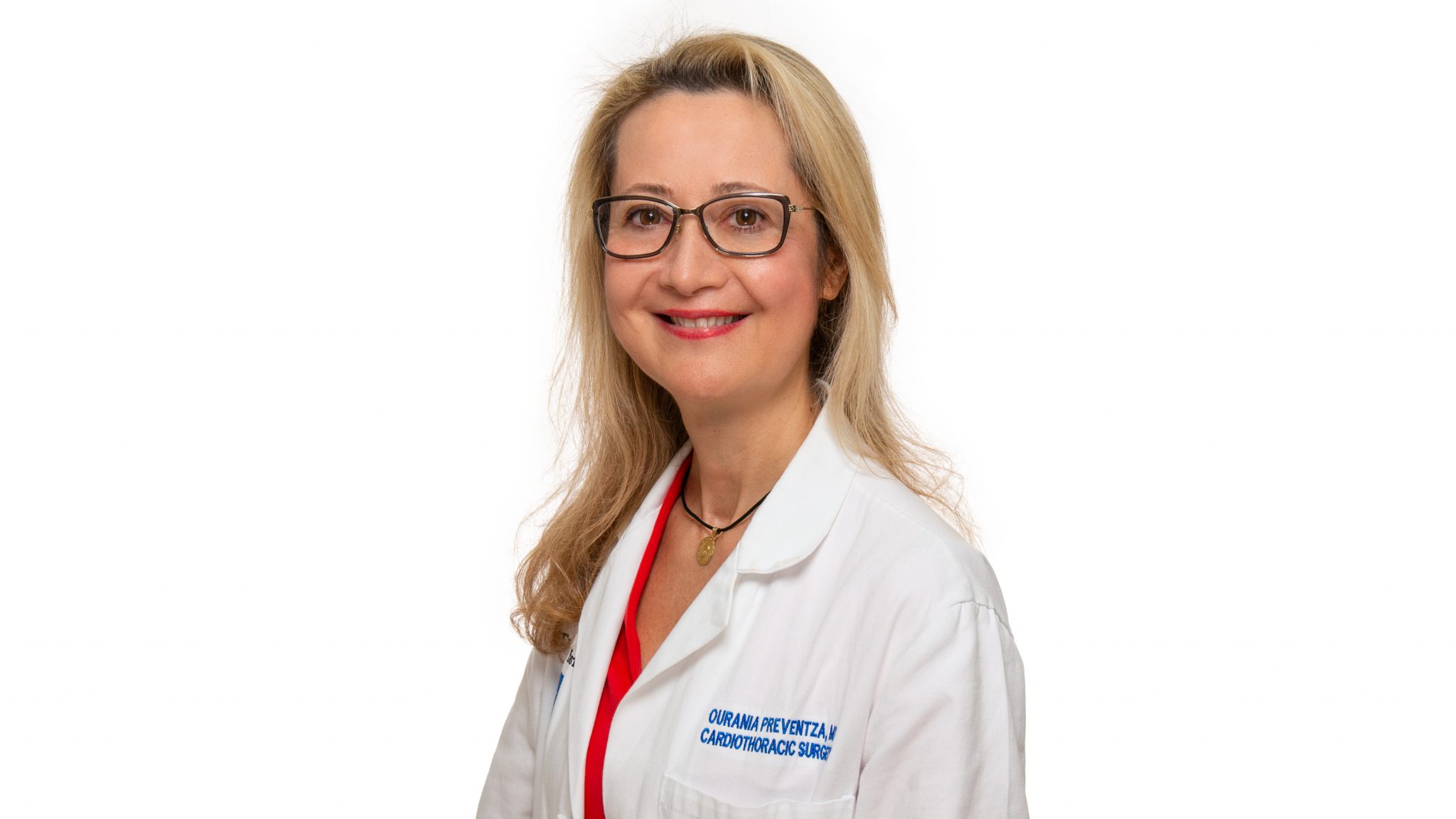Demographic Study Reveals Progress Toward Increased Diversity and Representation of Women in Cardiothoracic Surgery Training Program

Workforce diversity has been shown repeatedly to positively influence patient outcomes, academic success measures, and career satisfaction. Although minority representation in the cardiothoracic surgery workforce has increased, gender and racial/ethnic disparities have persisted, particularly with respect to training opportunities and employment. Surgeons and clinical education experts from The Texas Heart Institute and across the country recently investigated the representation of women and minority groups in the pipeline for the integrated 6-year (I-6) cardiothoracic surgery residency program.
Ourania A. Preventza, MD, MBA, Professor of Surgery in the Division of Cardiothoracic Surgery at Baylor College of Medicine (BCM) and Academic Professional Staff member at The Texas Heart Institute, serves as Assistant Director of the Thoracic Surgery Integrated Residency and Independent Fellowship Program at BCM and The Institute. Dr. Preventza, together with Jackie Olive, MD, who was previously a medical student at Baylor College of Medicine and is currently a resident in an I-6 cardiothoracic surgery training program at Duke University, has pioneered several studies to identify gender and racial/ethnic disparities in the field of cardiothoracic surgery. “With these studies, our goal has been to champion gender and racial/ethnic equity while prioritizing the recruitment of academically and clinically excellent candidates into the cardiothoracic subspecialty,” explains Dr. Preventza.
Among cardiothoracic surgery residency training programs, the I-6 program is one of several paths that medical students can choose. The overarching objective of this relatively new training program is to provide comprehensive immersion in the diagnosis and management of all aspects of cardiovascular and thoracic diseases through multidisciplinary training. Upon completion of an I-6 program, residents are eligible to sit for American Board of Thoracic Surgery certification, but not for the American Board of Surgery certification.
The I-6 residency training model may attract individuals with diverse backgrounds and perspectives because of the focused curriculum and greater potential for more flexible career and lifestyle choices. Previously, Drs. Preventza and Olive and colleagues showed that I-6 residents constituted nearly one-half of all cardiothoracic surgery trainees and that an overall increased proportion of women in cardiothoracic surgery training programs was attributed to an increase in the number of women in an I-6 program. However, the relative lack of significant improvement in the matriculation of minority I-6 residents has emphasized the need for intentional action to produce change.
Under Dr. Preventza’s guidance, Dr. Olive recently served as first author of a study in which she and a national panel of investigators quantified the representation women and minority groups in the pipeline for I-6 residency. They did this by studying the demographic characteristics of individuals at progressive stages of training, including medical students, I-6 residency applicants, and I-6 residents over a period of 4 years (2015-2019). In this cross-sectional study of data obtained from various publicly available databases, the researchers identified areas of both progress and inequity and have published their findings in Annals of Thoracic Surgery, the official journal of the Society of Thoracic Surgeons and the Southern Thoracic Surgical Association.
The investigators found that at each training level, the representation of women and most non-White races and ethnicities increased during the study period. The greatest increases in I-6 applicants were found among women and Asian/Pacific Islanders, whereas the most significant increases in underrepresented groups among I-6 residents were in women, Asian/Pacific Islanders, Hispanics, and Black/African Americans. Notably, however, the representation of women and minorities was greater in the overall medical student population than in the group of I-6 residents. This finding magnifies the need to foster an early interest in the subspecialty of cardiothoracic surgery among all medical students, while also mitigating bias during recruitment.
As a commission to those in the field of cardiothoracic surgery, Dr. Preventza concludes, “There are many practical steps that can be taken to facilitate an early interest in I-6 programs among medical students, particularly in under-represented groups. At an individual level, we need to continue fostering a culture of inclusion and combatting internal biases to make the field more appealing to diverse applicants. At the institutional and cardiothoracic surgery community levels, we can provide additional support for diversity and inclusion in the form of formal didactics, scholarships for medical students interested in cardiothoracic surgery, and structured mentorship or shadowing. Finally, we must continue to intentionally recruit women through structured mentorship programs and the top-down encouragement of compatible professional and personal goals.”
Read Report
Olive JK, Yost CC, Robinson JA, Brescia AA, Han JJ, Haney JC, Forbess JM, Varghese TK Jr, Backhus LM, Cooke DT, Cornwell LD, Preventza OA. Demographics of Current and Aspiring Integrated Six-year Cardiothoracic Surgery Trainees. Ann Thorac Surg. 2023 Mar;115(3):771-777. doi: 10.1016/j.athoracsur.2022.06.051. Epub 2022 Aug 5.
News Story By Nicole Stancel, PhD, ELS(D)




